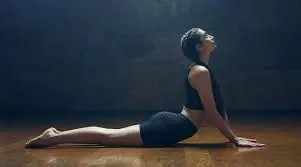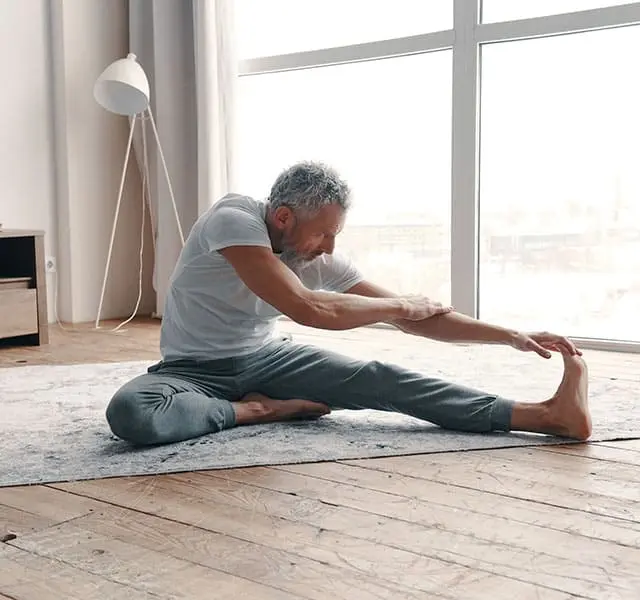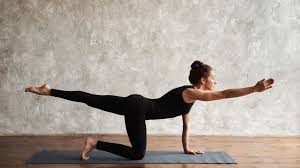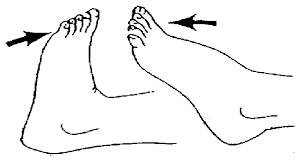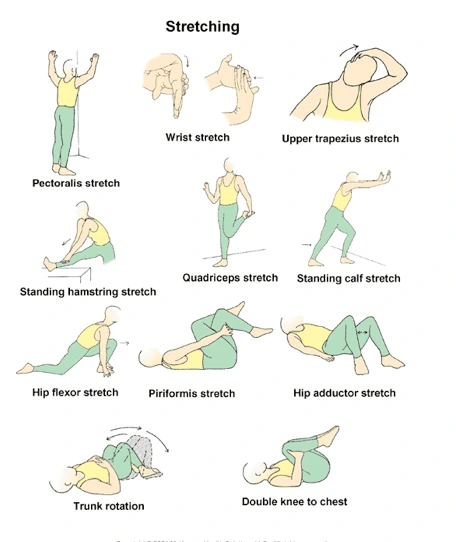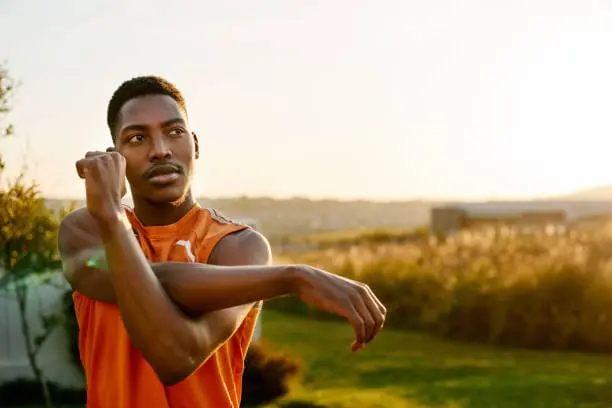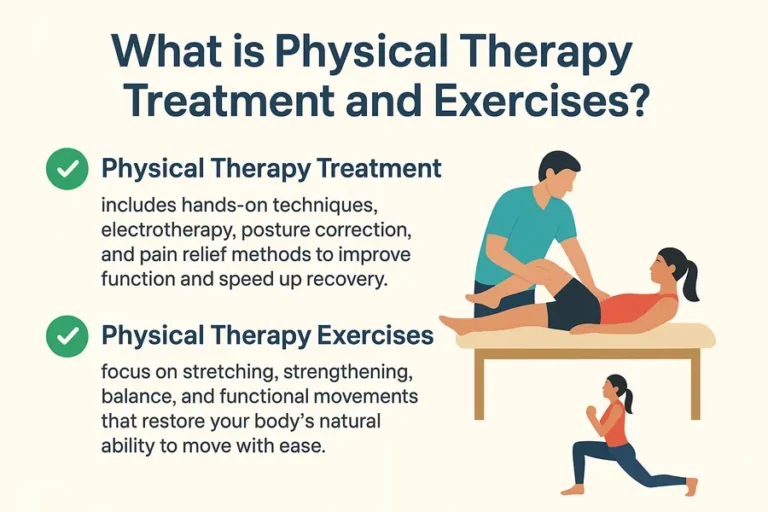Bhujangasana (Cobra Pose)
Bhujangasana, commonly known as the Cobra Pose, is a fundamental backbend in the practice of Hatha Yoga. Named after the Sanskrit words “bhujanga” meaning “snake” and “asana” meaning “pose,” this asana is designed to mimic the gentle arching of a cobra’s hood, symbolizing both strength and grace.
What is Bhujangasana?
It is a beginner’s back-bend yoga pose. This yoga exercises the abdominals and strengthens the spine. Additionally, this yoga stance strengthens the spine and tones the abdomen. Among the primary advantages of Bhujangasana is its ability to enhance blood circulation.
It’s also regarded as one of the best yoga poses for flat stomachs. Additionally, this pose strengthens the arms, opens the neck and shoulders, expands the chest and shoulders, and eases constipation. It can be quite helpful in reducing pain in the neck, back, and abdominal muscles.
To find out more about Bhujangasana’s stance, its advantages, safety measures, and much more, continue reading.
What are the Benefits of Bhujangasana?
Among the primary advantages of Bhujangasana is its ability to enhance blood circulation. The cells in your body will receive adequate oxygen and nutrients once your blood circulation is healthy. Better blood circulation will also maintain hormonal balance. Other advantages of Bhujangasana include:
- stimulates the reproductive, urogenital, and abdominal digestion systems.
- Improves the efficiency of the respiratory system
- Good for Inflammatory Bowel Disease (IBD)
- Good for diabetes
- Helps treat PCOS and irregular menstruation
- stretches the abdominal, shoulder, and chest muscles.
- Decreases stiffness of the lower back
- Strengthens the arms and shoulders
- Increases flexibility
- Elevates mood
- Firms and tones the buttocks
- enhances cardiovascular health by energizing and stimulating the heart.
- helps to clear the lungs and heart’s passageways by opening the chest.
- enhances blood and oxygen circulation, particularly in the spinal and pelvic areas.
- Improves digestion
- Strengthens the spine
- Soothes sciatica
- Helps to ease symptoms of asthma
- Strengthens your spin
- Reduces belly fat
- stimulates the kidneys and other abdominal organs.
- Relieves stress and fatigue
What are Preparatory poses for Bhujangasana?
- Adho Mukhasvanasana (Downward-facing Dog Pose)
- Salamba Bhujangasana (Sphinx Pose)
- Salabhasana (Locust Pose)
How to do Bhujangasana (Cobra Stretch)?
- Lay flat on your stomach in the relaxation pose. To rest your head on your hands, cross them in front of you.
- Bring your legs together slowly. Place your forehead on the floor.
- Make sure your hands are near your shoulders and your arms are crossed at the elbows.
- Lift your elbows a little off the ground. Take a breath. Push your chin out and raise your forehead.
- Lift your torso off the floor.
- Make sure that your stomach is lying on the ground.
- Imagine the motion of a snake lifting its hood, and then slowly feel your spine elongate. Keep your posture straight.
- Slowly relax until your body is flat against the ground again. Hold your head up until your torso unrolls all the way.
Bhujangasana video:
What are the Counter poses for Bhujangasana?
- Balasana (Child’s Pose)
- The Half Lord of the Fishes Pose is sometimes referred to as Ardha Matsyendrasana.
- Adho Mukha Svanasana (Downward-Facing Dog Pose)
- Ananda Balasana (Happy Baby Pose)
What are the tips for beginners?
When performing the Bhujangasan pose or position, bear the following safety precautions in mind.
- Stretches such as standing spinal twists, standing side bend pose, standing backbend, standing side stretch, standing pelvic circle, and standing forward folds might help you get ready for Bhujangasan. Your body will warm up more easily for Bhujangasana with these stretches.
- Before performing Bhujangasana, begin your yoga practice with Suryanamaskar, Advasana, and Adho Mukha Svanasana.
- For best results, combine Bhujangasana with relaxing poses like Prasarita Balasana, Vajrasana, Matsyasana, or Savasana.
- Make sure your hands are properly positioned beneath your shoulders and adjacent to your chest before raising your head and chest.
- Don’t stand with your arms straight. To prevent your shoulders from being pressed up against your ears, slightly bend your elbows.
- When you are in the Classic Cobra Pose, your neck should gently arch back. Look straight ahead or diagonally down to prevent straining.
- For a low Cobra Pose, keep your feet together. To lessen the strain on your lower back when performing lengthy Cobra Pose, maintain your feet hip-distance apart. Point your feet straight back while keeping your heels up and your toes tucked under.
- Avoid using too much backbend. Lifting without putting undue strain on your back will help you find a comfortable height. To modify your extension if it is uncomfortable, raise your hands off the ground for a little while.
Which kind of cobra pose, also known as Bhujangasana, are there?
There are some types of Cobra pose :
- Traditional Bhujangasana
- Ardha Bhujangasana or Half Cobra Pose
- The poses of Vakra, Hasta Bhujangasana, and Curved Hand Cobra
- Raised Arm Cobra, Saral Hasta Bhujangasana, or Urdhva Bhujangasana
- Salamba Bhujangasana or Sphinx Pose
Traditional Bhujangasana
This is mentioned above.
Ardha Bhujangasana or Half Cobra Pose
What is Ardha Bhujangasana?
Compared to bhujangasana, one of the most popular postures in many yoga traditions and a component of the Sun Salutation vinyasa, Ardha Bhujangasana is a novice back bend that puts less strain on the back. Ardha, which means “half,” bhujanga, which means “cobra,” “serpent,” or “snake,” and asana, which means “pose” or “posture,” are the Sanskrit origins of the word.
In English, Ardha Bhujangasana is referred to as the half-cobra position.
In Sanskrit, the half cobra pose, or Ardha bhujangasana, is the cobra stance for beginners. It’s ideal for beginners learning yoga because it’s a far less strenuous back bend. The abdomen stays on the floor and only a little pressure is applied against the ground rather than pushing into the hands.
How to do Ardha Bhujangasana?
Place your legs together in a prone position. The forehead should remain on the floor.
Spread the fingers wide and place the hands on the ground next to the chest.
Use your legs. Inhale, then push into the hands to lift the chest and forehead off the ground. Turn the shoulders back and forth.
Hold the pose while taking a breath.
Now exhale and let go.
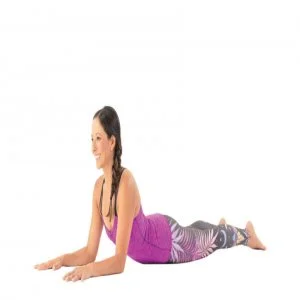
Benefits of Half Cobra Pose :
Physical Benefits-
- opens the chest and shoulders.
- revitalizes the back muscles and spinal nerves.
- stimulates the pelvic and intestinal systems.
- corrects disc abnormalities by strengthening and increasing the flexibility of the back and spine.
- rejuvenates the chest and neck muscles.
- enhances ovarian, prostate, and digestive function.
- Prevent asthma, sciatica, and lumbago.
- enhances blood flow.
- enhances posture.
Mental Benefits-
- Decreases stress.
- Improves concentration.
- Relieves mild depression.
- Relieves anxiety.
Contraindications for Half Cobra Pose :
If you suffer from any of the following conditions or injuries, avoid using this pose:
- Back injury
- Headache
- Pregnancy
- Wrist problems
- High blood pressure
- Severe spinal injury
- Severe neck injury
Caution for Half Cobra Pose :
- Avoid jerking, or pulling abruptly, in an attempt to raise your body.
- It is not permitted to raise the navel or its lower portion.
- Reduce the weight on your hands.
- The thumb should make contact with the chest close to the armpit in the final position.
- The hands can continue to support the initial weight.
- Some people bend their heads first upon returning, but this should be avoided. The body part that leaves the floor first will be the last to return.
The poses of Vakra, Hasta Bhujangasana, and Curved Hand Cobra
The second well-known pose is the curled hand cobra pose, also known as hasta bhujangasana. Here, you can flex your arms and perform the yoga without straightening them. In this yoga, you can also extend your hands.
One beneficial cobra position that improves the effectiveness of the digestive system is the curled hand cobra stance (Vakra Hasta Bhujangasana).
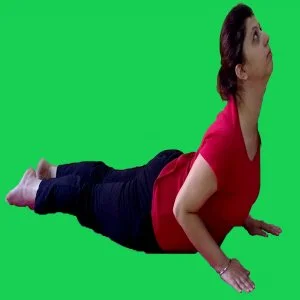
Raised Arm Cobra, Saral Hasta Bhujangasana, or Urdhva Bhujangasana
Traditional bhujangasana is similar to Urdhava Bhujangasana.The hand’s location on the floor makes a difference. Your hands should be close to your shoulders in Bhujangasana, but in Urdhva Bhujangasana, they should be close to your waist to provide a completely straight arm.
Salamba Bhujangasana or Sphinx Pose
What is Salamba Bhujangasana ?
SA-lumb-aa-BHu-Jung-AAhs-uh-nuh is the pronunciation.
Salamba Bhujangasana, also known as Sphinx pose, is a modified form of Bhujangasana designed to make it easier for novices to transition into. Because it has less arch and relieves pressure on the spine, this position is also beneficial for those who suffer from lower back pain.
Beginners should try salamba bhujangasana, a yoga pose that strengthens the spine and expands the shoulders and chest.
In English, Salabma Bhujangasana is frequently called a sphinx pose.
Most novices can perform salamba bhujangasana, a moderate back bend. This form of bhujangasana, often known as cobra position, can be beneficial for those with lower back issues. This posture revitalizes the body, soothes the neurological system, and is beneficial for tiredness. It serves as a warm-up for more profound backbends.
Salamba Bhujangasana is also a spiritually uplifting pose. According to yoga, activating this chakra promotes self-love, reduces despair, and fosters a more optimistic view of life.
How to do Sphinx Pose (Salamba Bhujangasana):
In lying down spinal alignment, position your forehead on the floor and your toes flat on the floor.
With your heels and feet almost touching, keep your legs tight together.
Keeping your navel on the floor, progressively elevate your head, chest, and abdomen while inhaling deeply.
Raise your upper body off the floor and then return to a standing position.
Breathe thoughtfully as you bend your spine vertebra by vertebra.
Make sure your head is pointing directly ahead and your feet are still close together.
Breathe out and gently place your head, chest, and abdomen back on the floor.
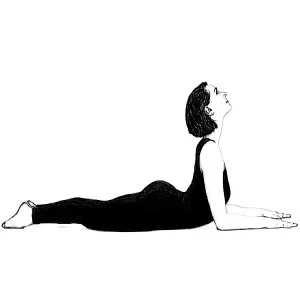
Benefits of the Sphinx Pose (Salamba Bhujangasana):
- Strengthens the Spine – By activating the back muscles, particularly the spinal erectors, Sphinx Pose strengthens the spine.
- It Helps to Improve the Lung Capacity – Because our lungs are located in the chest cavity, the Sphinx posture helps to expand the space inside of them, which in turn enhances lung capacity. As your lung capacity increases, so will your breathing pattern.
- Sphinx Pose Improves Digestion – Sphinx Pose improves digestion by stimulating the stomach and intestines, two abdominal organs. Additionally, it increases blood flow to the digestive system and other body organs, enabling optimal operation.
- Improves Blood Circulation – The sphinx pose, also known as Salamba Bhujangasana, stimulates oxygenated blood flow throughout the body by stretching the chest muscles. This will help you combat weariness and continue your everyday activities without experiencing fatigue frequently.
- Sphinx Pose is a Good Way to Reduce Stress and Anxiety – “Sphinx Pose is a useful technique for lowering anxiety and stress.” By relieving tension in the neck, shoulders, and lower back muscles—all of which are key contributors to stress-related problems including headaches and migraine attacks—it calms the mind. After practicing this pose frequently throughout time, it has a relaxing impact on the nervous system and the body, which makes you feel more at ease.
- It aids in Improve Breathing patterns – The benefits of Sphinx Pose for improving respiratory patterns are well documented. Better breathing results in increased oxygenated blood flow, which supports the proper operation of all essential organs. If you want to improve your general health and well-being, you should incorporate this pose into your yoga practice.
- It is a Good Way to Begin Your Yoga Practice – Sphinx posture, also known as Salamba Bhujangasana, is a great way to begin your yoga practice. It prepares the body for more difficult poses by warming it up. Thus, if you’re new to yoga or searching for a basic pose that has several benefits, this is the one for you.
Contraindications of Sphinx Pose (Salamba Bhujangasana):
Salamba Bhujangasana puts a lot of strain on the abdomen, thus people with stiff necks and spine ailments should avoid attempting it.
If they are pregnant or have other health issues like Salmana Bhyang (spinal meningocele), this pose ends up hurting their unborn child.
If you have recently had abdominal surgery, had shattered wrists or ribs, or are pregnant, you should avoid the sphinx pose.
It is best to speak with your doctor before beginning the Sphinx posture if you have any neck or back difficulties, such as sciatica discomfort, as this posture may make problems worse.
Beginner’s Tips for Sphinx Pose (Salamba Bhujangasana):
To prevent injuries from incorrect alignment during Salamba Bhujangasana (Sphinx position), beginners should begin practicing this position under the guidance of a qualified yoga instructor who can guide them through the correct steps.
To maintain proper alignment throughout the posture, keep your scapulae firmly pressed on the floor and look straight ahead.
Practice this stance for a few seconds at first, then increase the duration as you become more accustomed to it if you have trouble holding it for an extended period.
What are the precautions you should take when performing Bhujangasana?
There are a few precautions you must take when performing bhujangasana. Keep in mind that the hands, feet, and limbs should feel the pressure, not the back. We have included the safety measures you should follow when performing the bhujangasana in this section.
Problem With Stiff Neck
In the cobra position, also known as bhujangasana, the neck is flexed upward from the spine. Now, be careful to do this slowly and correctly. Additionally, keep in mind to breathe entirely via your nose. You risk injuring your neck and causing the muscles to stretch if you don’t act gently.
Wrong Hand Placement
The hands should remain evenly spaced from the shoulders in order to maintain the proper Bhujangasana pose. Shoulders will not form a back arch if arms are not kept at a distance. Because of this, the body will be injured and the posture will be incorrect.
Pull the Elbows Closure
When executing Bhujangasana, locking the elbow won’t be required. Occasionally, people will lock their elbows.
Don’t go too far beyond your body’s restrictions because everyone’s body has distinct limits.
Who Should Avoid Performing Bhujangasana?
Even though bhujangasana is safe, certain people should avoid it entirely because of certain issues.
If you have previously experienced chronic illnesses or spinal abnormalities, practice the Cobra Pose under the supervision of a qualified instructor. To guarantee safety and appropriate technique, practice under the guidance of a qualified yoga instructor or an experienced yoga specialist.
- those with severe neck conditions, such as spondylitis.
- If you have had a serious spinal operation or injury, you should avoid doing a cobra position.
- If you are pregnant, avoid doing Bhujangasana.
- If you recently had stomach surgery, don’t attempt this.
- Anyone with carpal tunnel syndrome or any other wrist condition should stay away from it entirely.
- See a doctor before performing any yoga poses if you suffer from a strong headache.
- If your ribs are fractured, don’t do it.
- Avoid doing this yoga pose while having an asthma episode.
FAQs
What is Bhujangasana and its benefits?
Bhujangasana, often known as Cobra practice, is a popular yoga practice. This backbend position strengthens the arms and back muscles while stretching the spine, chest, and abdomen. It has several health advantages and is frequently performed as part of the sun salutation ritual.
What is the best time to do Bhujangasana?
You can do bhujangasana after a stressful day. The body restores the lost energy in this way. Furthermore, it improves blood circulation all over the body. This makes it easier for the body’s cells to get an abundance of oxygen and nutrients.
Is Bhujangasana good for belly fat?
Cobra asana, another name for Bhujangasana, is one of the best yoga poses for losing belly fat. This pose can help you straighten your posture and extend your body, which can help you feel less stressed more quickly. It aids in the relief of neck and shoulder pain. It also tones the tummy and strengthens the back and shoulders.
How many repetitions of Bhujangasana?
In the morning or evening, you can do Bhujangasana four or five times.
What are the side effects of Bhujangasana?
Severe injuries: Patients with severe injuries should not attempt Bhujangasana since it exerts strain on the hip, pelvic, knee, rib cage, shoulder, elbow, and wrist joints. Stomach Disorders: Seek appropriate advice if you have stomach ulcers, or avoid the position if it hurts.
References:
- Bhujangasana – The Cobra pose | Steps | Benefits | Learn Yogasanas online | Yoga and Kerala. (n.d.). Yoga. https://www.keralatourism.org/yoga/reclining-postures/bhujangasana
- Dr.Nidhiphysio. (2024, September 19). Bhujangasana: Health Benefits,Types and How to do? Mobile Physiotherapy Clinic. https://mobilephysiotherapyclinic.in/bhujangasana-yoga/#What_are_Preparatory_poses_for_Bhujangasana
- Mandial, D. (2024, August 7). Bhujangasana (Cobra Pose): Steps, Benefits, Precautions, Tips & More. Truemeds. https://www.truemeds.in/blog/bhujangasana-cobra-pose

